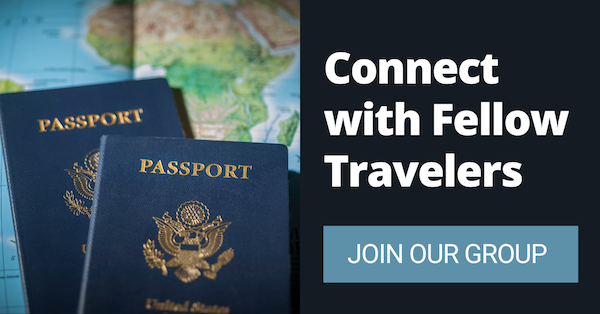
Small Budget, Big Memories: How to Plan Affordable Vacations That Don’t Feel Cheap
By: Frayed Passport
Skip to Section
Article Summary
Big travel dreams don’t need a big budget. With the right planning, flexibility, and a little strategy, you can make every dollar stretch a lot farther than you think. This guide walks you through practical ways to plan real vacations without draining your bank account.
You’ll learn how to spot deals, reduce your biggest expenses, and still feel like you’re getting away — even if you don’t cross an ocean to do it. Whether you’re planning a backyard staycation, a budget-friendly European escape, or just trying to stop hemorrhaging money every time you eat out on the road, this guide has your back.
- Turn your region into a playground with creative staycation ideas that don’t feel like leftovers.
- Cut accommodation costs without sacrificing comfort — think housesitting, dorm stays, or local rentals.
- Time your trips during shoulder seasons and off-peak windows to dodge crowds and inflated prices.
- Use food strategies that keep the flavor and ditch the markup — like street food for lunch, sit-down for dinner.
- Put your rewards points, cashback, and card perks to work in ways that actually help you save.
That dream vacation doesn’t need to stay a dream just because your bank account isn’t overflowing. You can create amazing travel experiences without breaking the bank or taking on debt. The key? Strategic planning, flexibility, and focusing on what actually makes a trip memorable (hint: it’s rarely the price tag).
Here are some practical tips for planning budget-friendly getaways that still feel like real vacations!
Master the Art of the Creative Staycation
Staying local doesn’t mean staying home staring at your walls. The staycation gets a bad rap, but with the right approach, it can feel just as refreshing as traveling far away.
Map out a tourist route in your own region: Draw a circle on a map extending 100 miles from your home. Research every small town, state park, historical site, and local attraction within that circle. You’ll likely find dozens of places you’ve never visited.
Book alternative accommodations: Stay at a local B&B or guesthouse in a neighboring town for $60-100 per night. This simple change of scenery tricks your brain into vacation mode without the travel costs.
Create themed exploration days: Dedicate each day to a specific focus—historical sites on Monday, nature walks on Tuesday, local cuisine sampling on Wednesday. This structure makes your local adventure feel purposeful and planned.
Talk to actual locals: Chat with people who live in the areas you’re visiting. Ask, “What’s something visitors usually miss around here?” You’ll discover amazing spots no travel site mentions.
Try new transportation: If you normally drive, rent bikes for a day. Take local buses or trains to nearby towns. The change in how you get around adds to the vacation feeling.
Go Wild With Outdoor Budget Options

State parks are a fantastic place to spend a weekend exploring and enjoying the outdoors. – Photo by Cody Otto on Unsplash
Outdoor vacations offer the best bang for your buck, combining low accommodation costs with free natural entertainment.
Visit state parks: National parks get the glory, but state parks often have similar scenery with lower entrance fees ($3-7 versus $20-35) and fewer crowds. Many offer cabins at half the price of nearby hotels.
Target wilderness-adjacent towns: Staying in small towns 15-20 minutes outside popular natural attractions may cut lodging costs by 30-50%. You’ll find rooms for $70-90 instead of $150-200.
Join wilderness clubs: Organizations like the Sierra Club and Appalachian Mountain Club offer member-only lodges and cabins starting at $25-50 per night. Membership fees ($15-50 annually) pay for themselves in one stay.
RV parks for the non-RV crowd: If you have a campervan, then taking it out to a new RV park can be a fabulous way to take a mini-vacation and enjoy nature. And if you don’t have one, you may be delighted to hear that many RV parks rent small cabins or yurts for $40-70 per night! You get access to all facilities—showers, pools, community fire pits.
Rent camping gear locally: REI and many outdoor shops rent complete camping kits for $20-50 per day, solving the “I don’t own gear” problem without major investment.
Master Off-Season Travel Timing
Traveling during shoulder seasons doesn’t just save money—it often provides a better experience with fewer crowds and more authentic local interactions.
Know the micro-seasons: Every destination has specific timing sweet spots. For beach towns, try May or September when the water’s still warm but prices drop 40%. For mountain destinations, late April / early May and October offer beautiful scenery at 30-50% discount.
Target business destinations on weekends: Hotels in financial districts and business hubs slash prices by up to 60% from Friday to Sunday when business travelers leave. A $300 / night downtown Chicago hotel might drop to $130 on weekends.
Follow the opposite weather pattern: Book desert destinations in summer and ski towns in summer. Sedona in July and Aspen in May offer bargains with temperatures that remain perfectly manageable.
Utilize holiday dead zones: The weeks immediately following major holidays see dramatic price drops. January 2-15 and the week after Thanksgiving feature some of the lowest travel prices all year, with discounts of 50-70% compared to holiday rates.
City Breaks Without Breaking the Bank

Japanese gardens in Toulouse, France – Photo by Eder Pozo Pérez on Unsplash
Urban adventures deliver high entertainment value when you know how to navigate them affordably.
Target secondary European cities: Skip Paris and Rome for Toulouse and Bologna. You’ll cut costs by 40% while enjoying equally amazing food, culture, and architecture. Lyon instead of Paris saves about €75 per day in expenses.
Use airline fare trackers strategically: Set up Google Flights or Skyscanner alerts 3-4 months before potential travel dates with multiple destination options. When fares dip below your target (often on Tuesdays), book immediately.
Book direct with hotels: Call smaller hotels directly and ask: “I found your room for $X online. Can you offer a better rate if I book directly?” This simple question often saves 10-15% and might include extras like breakfast or parking.
Buy city tourist cards: Many cities offer visitor passes that include public transportation and museum access. The Madrid City Card, Prague Visitor Pass, and similar options typically pay for themselves after just 2-3 attractions plus transit use.
Schedule free museum days: Most major museums waive admission fees on specific days each month. In Paris, many museums offer free entry on the first Sunday monthly. Plan your itinerary around these days for cultural experiences without the €10-20 per person entry fees.
Leverage Rewards and Cashback Creatively

Credit cards with travel rewards – Photo by CardMapr.nl on Unsplash
Points and rewards systems work best when you use them strategically rather than casually.
Audit your existing points: Take 30 minutes to log into every loyalty program where you have an account. You might discover forgotten hotel points or airline miles worth hundreds in travel value. Airlines typically charge about 25,000 miles for a domestic roundtrip ticket (worth roughly $300-400).
Stack credit card sign-up bonuses: Many travel credit cards offer 50,000+ point bonuses worth $500-750 in travel after spending $3,000 in the first three months. Time these sign-ups 4-5 months before planned trips to maximize value.
Use cashback for travel funds: Dedicate a specific savings account for travel and direct all cashback rewards there. Apps like Rakuten can add $15-40 monthly to your travel fund without changing your normal spending.
Book through credit card travel portals: Chase Ultimate Rewards and American Express Travel often offer discounted rates on hotels and rental cars that don’t appear on public booking sites, with savings of 15-25% plus extra point earnings.
Combine loyalty programs: Many hotel loyalty programs partner with airlines. By linking your accounts, you can double-dip on rewards. For example, Marriott Bonvoy members can earn both hotel points and airline miles on the same stay.
Food Strategies That Save Serious Cash

Amazing street food – Photo by micheile henderson on Unsplash
Food expenses can quietly drain your travel budget, but smart strategies cut costs without sacrificing culinary experiences.
Adopt the “one fancy meal” rule: Budget for a single splurge meal at a great local restaurant. For other meals, go casual and local. This approach saves $30-50 per person daily while still giving you that special dining memory.
Book accommodations with kitchens: Preparing just breakfast and one other meal daily in a rental kitchen saves a family of four approximately $75-100 daily. Morning coffee alone costs $3-5 per person at cafes versus pennies when self-prepared.
Visit local grocery stores: Supermarkets offer cultural experiences alongside savings. European grocery stores sell exceptional cheeses, breads, and wines at non-tourist prices. A picnic assembled from grocery finds costs $8-15 per person versus $25-40 at restaurants.
Follow the “street food for lunch, sit-down for dinner” rule: Street food typically costs 30-50% less than restaurant equivalents of the same dishes. In cities like Bangkok or Mexico City, delicious street lunches run $3-7 compared to $12-20 in restaurants.
Research university neighborhoods: Areas near colleges offer lower-priced food options aimed at student budgets. These neighborhoods often feature high-quality, authentic international options at 40% less than tourist district restaurants.
Accommodation Hacks Beyond the Obvious

Petsitting can help you save money on housing! – Photo by Ольга Андреева on Unsplash
Your sleeping arrangements typically represent your largest travel expense, so creative approaches here yield big savings.
Try house-sitting: Websites like TrustedHousesitters connect travelers with homeowners needing pet and property care. In exchange for daily pet feeding and basic home maintenance, you get completely free accommodations, often in desirable locations.
Book longer stays for steep discounts: Many vacation rentals offer weekly rates that effectively make one or two nights free. A $120/night apartment might discount to $700/week, reducing your nightly cost to $100.
Consider university dorms: During summer and winter breaks, many colleges rent empty dorm rooms to travelers. These basic but clean accommodations often cost just $30-60 per night and include amenities like gyms and campus cafeterias.
Explore religious retreat centers: Monasteries, convents, and retreat centers worldwide offer simple rooms at modest prices, typically $40-75 per night including breakfast.
Book hotels with genuinely useful amenities: A slightly pricier hotel ($15-20 more per night) that includes substantial breakfast, airport shuttles, and free parking can actually cost less overall than budget options lacking these features.
Ready to Travel?
The most memorable travel experiences rarely correlate with spending. By shifting focus from luxury to experience, remaining flexible, and employing smart saving strategies, you can enjoy meaningful vacations regardless of budget constraints.
Start small with weekend trips using these techniques, then apply your savings knowledge to progressively more ambitious adventures. Even modest budgets stretch surprisingly far when maximized through strategic planning.
Happy Travels!
Featured image by Alexandra Tran on Unsplash
Information published on this website and across our networks can change over time. Stories and recommendations reflect the subjective opinions of our writers. You should consult multiple sources to ensure you have the most current, safe, and correct details for your own research and plans.
Frayed Passport is a participant in the Amazon Associates Program, an affiliate advertising program designed to provide a means for sites to earn advertising fees by advertising and linking to Amazon.com. We also may share links to other affiliates and sponsors in articles across our website.






